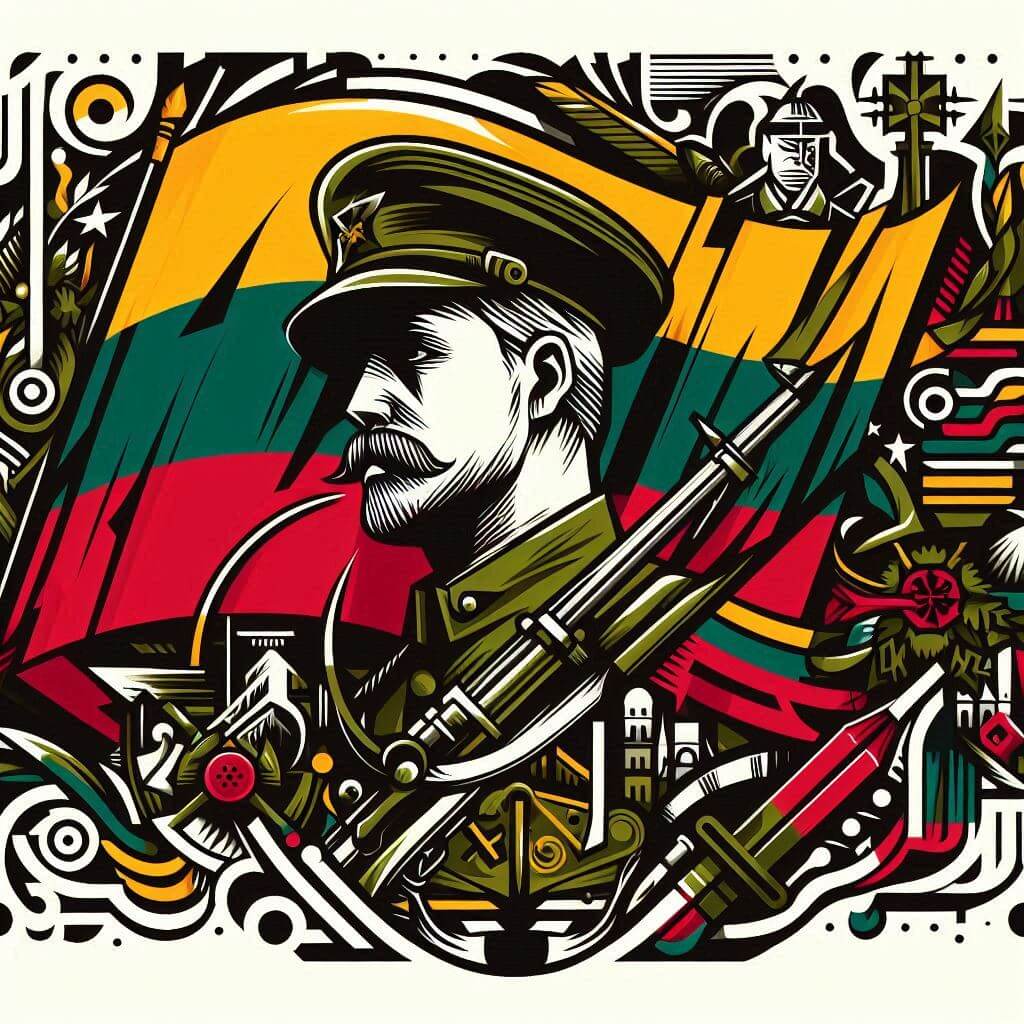The flag of Lithuania consists of three horizontal stripes of yellow, green, and red. This tricolor design encapsulates Lithuania's rich history, cultural values, and national aspirations.
Lithuania information
| National Flag Day | — |
| Sovereign state | Yes |
| Official name | Republic of Lithuania |
| Capital | Vilnius |
| Population | 2,794,184 |
| Area | 65,300 km² |
| Currency | Euro (EUR) |
| Language | Lithuanian |
| Continent | Europe |
| Region | Northern Europe |
| Subregion | Baltic states |
| Borders | Latvia, Belarus, Poland, Russia (Kaliningrad Oblast) |
| Timezone | Eastern European Time (EET) UTC+2 |
| Calling code | +370 |
| Top-level domain | .lt |
History of the Lithuanian Flag
 The Lithuanian flag has a long and complex history. Its origins can be traced back to the early 20th century during Lithuania's struggle for independence. The current design was officially adopted on March 20, 1989, shortly before Lithuania declared its independence from the Soviet Union. However, this flag's history dates back to 1918 when it was first used as the national flag of the newly independent Lithuanian state. During the Soviet occupation (1940-1941 and 1944-1989), the flag was banned, but it remained a powerful symbol of resistance and national identity for many Lithuanians. Its readoption in 1989 marked a crucial moment in Lithuania's journey towards restored independence.
The Lithuanian flag has a long and complex history. Its origins can be traced back to the early 20th century during Lithuania's struggle for independence. The current design was officially adopted on March 20, 1989, shortly before Lithuania declared its independence from the Soviet Union. However, this flag's history dates back to 1918 when it was first used as the national flag of the newly independent Lithuanian state. During the Soviet occupation (1940-1941 and 1944-1989), the flag was banned, but it remained a powerful symbol of resistance and national identity for many Lithuanians. Its readoption in 1989 marked a crucial moment in Lithuania's journey towards restored independence.
Symbolism and Design of the Lithuanian Flag
Each color of the Lithuanian flag carries deep symbolic meaning. The yellow stripe at the top represents the sun, light, and prosperity. It symbolizes Lithuania's bright future and the golden fields of wheat that are characteristic of the Lithuanian landscape. The green stripe in the middle represents the country's lush forests, fertile fields, and the beauty of nature. It also symbolizes hope, freedom, and the nation's connection to its land. The red stripe at the bottom represents the blood shed by Lithuanians in their fight for independence, as well as their courage, bravery, and love for their homeland. Together, these colors reflect Lithuania's natural beauty, historical struggles, and aspirations for a prosperous future.
Usage and Significance of the Lithuanian Flag
 The flag of Lithuania is a source of national pride and is prominently displayed throughout the country. It flies on government buildings, schools, and during national celebrations such as Statehood Day (July 6) and Independence Day (February 16). The flag plays a crucial role in fostering unity and identity among Lithuanians, serving as a reminder of their shared history and cultural heritage. In international contexts, the flag represents Lithuania in diplomatic settings, sports events, and cultural exchanges, symbolizing the country's sovereignty and its place in the global community. During times of national significance, the flag often becomes a rallying point for Lithuanians, embodying their resilience and commitment to democratic values.
The flag of Lithuania is a source of national pride and is prominently displayed throughout the country. It flies on government buildings, schools, and during national celebrations such as Statehood Day (July 6) and Independence Day (February 16). The flag plays a crucial role in fostering unity and identity among Lithuanians, serving as a reminder of their shared history and cultural heritage. In international contexts, the flag represents Lithuania in diplomatic settings, sports events, and cultural exchanges, symbolizing the country's sovereignty and its place in the global community. During times of national significance, the flag often becomes a rallying point for Lithuanians, embodying their resilience and commitment to democratic values.
Interesting Facts About the Lithuanian Flag
- The Lithuanian flag is one of the few national flags that feature the color yellow prominently.
- During the period of Soviet occupation, possession of the Lithuanian tricolor was punishable by imprisonment or deportation.
- The flag's colors are often associated with Lithuania's natural landscapes: yellow for the sun and fields of grain, green for the forests, and red for the soil.
- On July 6, 1918, the Lithuanian tricolor was first raised on the Gediminas Tower in Vilnius, marking a significant moment in the country's history.
- The exact shades of colors used in the Lithuanian flag are specified in the country's law to ensure consistency in its reproduction.